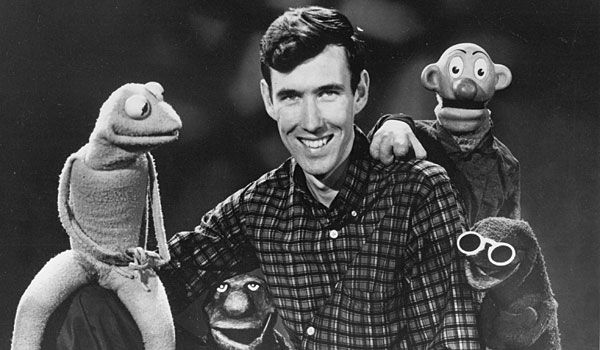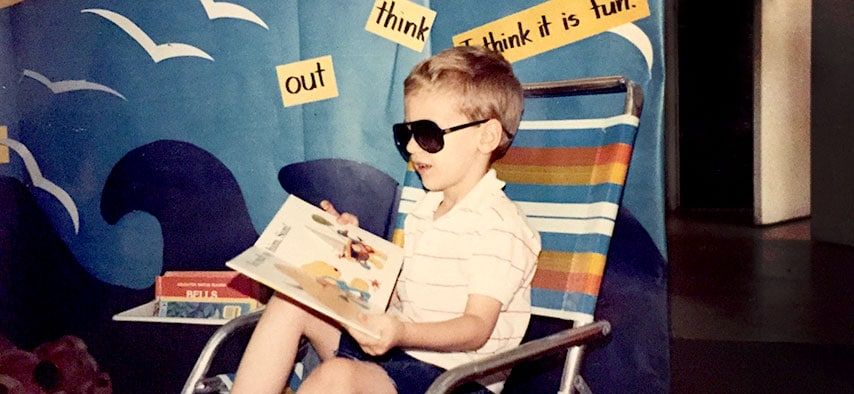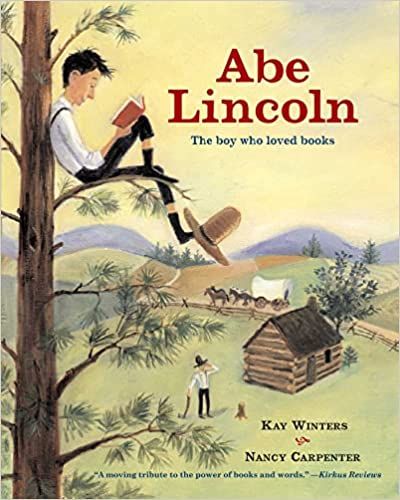Stumbling onto a Love of Life

If you look at those who have been greatly successful in life many times it was their passions that led to their “making it”. They didn’t actively seek it out but rather by creating their Art and doing “The Work” they stumbled into a life they truly love.
Tyler Oakley in the interview shown below shares about his success so far,
At the beginning, the first year, the first two years, the first three years, I was like no. […] I never had the intention that this is going to be my life. Like, I always thought it would be a fun hobby. — Tyler Oakley
At the time of this writing, with over 6.81 million Youtube followers alone, it has clearly blossomed into a full-time gig of which was never originally intended. I’ve enjoyed watching it since 2009 and seeing it grow into what it is today. ( bacon )
Jim Henson started making puppets while he and his wife Jane were in college. They did it as a means to an end to help fund school. A result of this Sam and Friends, Henson’s first live action televised puppet show in DC, was originally planned to air for a few weeks which turned into six years.
 Sam & Friends: Los Angeles Times archive
Sam & Friends: Los Angeles Times archive
In Henson’s Place ( iTunes ), a 52-minute documentary made in 1984, Henson describes his career,
I came to puppetry more through the art side of it. […] It’s almost like in theater an author writes things and creates characters. In puppetry you create characters […] that’s really your artwork […] which was the beginning of all of this. — Jim Henson
We never know all the details of where life will take us. The key is to go with the changes: adapt, evolve, and grow.
That is the nature of life.
Frank Oz goes on to mention that it wasn’t always successful. In the beginning they were doing a lot of commercials and grunt work just to keep practicing their art. All the networks turned them down because they thought it was just for kids.
The contrary was not realized until Lord Grade backed The Muppet Show. That major success only happened in the last 8 years… in context of 28+ years of Jim Henson and Frank Oz working with muppets.
“I really do believe that all of you are at the beginning of a wonderful journey. As you start traveling down that road of life, remember this: There are never enough comfort stops. The places you’re going to are never on the map.” — Kermit
For some reason, universally, the things that we chase the most are often what eludes us. We seek the end result of the effort, not seeing the underlining motivator or catalyst.
“To make a million dollars” is a bad reason to start a business. There is no focus and you will spin in a thousand different directions to make money.
“To craft the best socks on the planet iterating over many years” is a perfect reason. Create it, refine it, find your audience, and the money will take care of itself.
“If your only goal is to become rich, you will never achieve it.” — John D. Rockefeller
Brilliant Iteration

The wonderful thing about design concepts and patterns is that they can be reused. Whenever you hit on a core idea, it can be expanded to many different applications.
Recently, Apple has introduced Force Touch or haptic feedback into their products.
On the iPhone, as you press harder, you get a slight buzz on your finger and then a contextual menu pops open for a given app. As well as a feature called “peek and pop” that allows, on a harder press, the app to render a bubble with a contextual preview.
On the Mac, when you “click” something, the trackpad feels as if you are pushing it down, but it’s not moving. The click sound is coming from the speakers. It is tricking your brain into thinking that there was a click.
For now, this is just on the touchpad, which is one button. However, it could be used for the entire keyboard (mirror) as well.
On the Magic Touchpad, again, when you “click” something the trackpad feels as if you are pushing it down, but nothing moves. The old trackpad had to be on a flat surface to work as it was one giant button when pressed down onto it’s base. Now nothing moves, it too has a built-in speaker and artificially makes a clicking noise.
On the Apple Watch, if you use the digital crown to scroll too far up or down, it vibrates in a way that mimics the way a crown on a watch will spring back when wound too far.
I love the subtleness of this.
I love that there is a company that cares about the details enough to try this.
Pundits act like Apple has changed drastically since Steve Jobs passed. In fact, Apple has remained true to itself. They have remained true to design.
The small details really do add up to the overall user experience.
Creative Doesn’t Mean Being an Entrepreneur

Being creative and making Art is one of the most satisfying feelings that I experience.
However, having to create or own a business, draft up the perfect plan, and all, just before you can “get started” can be putting the cart before the horse. You don’t need to be an entrepreneur to be a maker.
Enjoy making jewelry by hand? Great. Make it for you. Don’t feel as if you have to set up shop on Etsy just because you are good at it. “But my friends all suggest I should!”
Make it for you. No pressure. Just make it.
Over time, if you find that it’s right, a business will grow around your Art. It will shift from being something you do in your free time to something that can sustain you.
However, if you try to start something a business for the sake of starting a business, it won’t grow. It’s like trying to chase love. You have to be a whole person first. As with finding your niche, you have to scratch your own itch first.
Businesses give structure to something bigger than you. Once your Art grows bigger than you, then it is time to give it the means to grow; the framework.
In the mean time, enjoy creating.
A Sure Bet

“Most artists are gamblers; they are impulsive people who don’t plan ahead.” This concept has been in the forefront of my mind for months now. The discovery was made in a conversation with my brother. We’ve seen this first hand in a few “serial entrepreneurs” that we’ve known. Start an idea, run with it for a little bit, and then let it drop or die off. Repeat.
I’ve done this myself.
I used to think this was a negative trait.
It’s not “having an unfinished idea” that is negative. It’s not risk that is negative. It’s not the notion of gambling that is negative.
In her book Big Magic, Elizabeth Gilbert speaks of a painter friend who also pointed out that most artists are gamblers. He made note of this on why art students get degrees. However, this can apply to any project or endeavour. He says,
Gambling is a dangerous habit. But whenever you make art, you’re always gambling. You’re rolling the dice on the slim odds that your investment of time, energy, and resources now might pay off later in a big way— that somebody might buy your work, and that you might become successful.
Elizabeth Gilbert continues this thought by saying…
You must be willing to take risks if you want to live a creative existence. But if you’re going to gamble, know that you are gambling.
…and finally…
And make certain that you can actually cover your bets (both emotionally and financially).
…and that was the missing piece of the puzzle.
Yes, it is gambling. That’s okay. Just make sure it is a sure bet. One that you can cover both emotionally and financially. If you are going to risk it all make sure that it is a thoughtful conscious decision to do so. Just don’t bet more than you’re willing to lose.
Better yet, create Art with calculated risk.
Do boring work, so that you can create Art for yourself.
Devote your free time to creating your Art.
Tribes or the Inspiration of Life
The Internet has made it so much easier to find people just like us. The slightly odd, wonderful, and a taste that is as unique as our fingerprint.
Before, media dictated the standard in preferences: music, fashion, culture, food, etc; People followed in step. There was an illusion of choice, but it was dictated by a few.
That world tries to hang on to its heritage. The shadow of it still exists.
We live in truly special time.
Create. Share your art. Express yourself. Find others that spark your interest. Collaborate. Be inspired. Inspire others. It is a beautiful cycle.
Holding a firm grip onto information, your ideas, and insights only hurt you. Set them free. Share. Only by letting go, can something grow.
Many times it will grow bigger than yourself.
Creating New Mental Pathways

Early On
When I was young, my parents bought me a book about Abraham Lincoln. The intended audience was geared towards kids. I remember being impressed that Abraham Lincoln taught himself how to read and write. He had a love of reading and read whatever he could get his hands on.
This impressed me so much. I thought to myself, “If he can teach himself how to read then I can teach myself to do anything.”
That started my love of reading. I’ve been self-educated my entire life. Any interest that crossed my mind would have me burrowed at the local library in a mound of books. Many memories of my childhood were spent in libraries. I love it.
Once the Internet became mainstream, I was amazed at the amount of information one could absorb. At age 13, I taught myself HTML. At age 15, I was working on learning CSS and Javascript. By age 16, I had created my first e-commerce client website. It was for a local trophy shop.
Mental Fatigue
There are times that I feel worn out after a long day’s work. Why? It is emotional labor. When you boil down what I do for a living to it’s simplest form, it is “problem-solving”. When crafting a user experience, you take the business goal and provide the simplest way possible for the user to achieve said goal.
That takes a lot of iteration, refining, and thoughtful consideration.
After Age 25
If you don’t spend a lifetime of learning, you’ll start to set your worldview in stone.
By the time we get to the age of 25, we just have so many existing pathways that our brain relies on, it’s hard to break free of them.
Source: What it takes to change your brain’s patterns after age 25 via Fast Company
Thankfully, I work in technology. The industry is always changing and always evolving. Processes, frameworks, and tools change every 2 years and the pace only seems to continue to march faster.
I have to stay up to date. I’m always reading. I make an effort to be constantly learning.
In the past, I’ve worked with some folks who got their education, started working on the day-to-day tasks, and forgot to stay current. It can be tempting to wear down a rut and continue doing what feels safe. However, the danger lies in that you blink and the world has changed around you.
I never want this to happen to me.
Repetition and Practice
Learning and making new connections don’t last for long–unless you practice them. You have to make them into new habits for it to stick. Practicing builds muscle memory.
Do we want to be better at sketching our designs and how our users might use them? We need to practice our sketching. Drawing the same design elements or scenes repeatedly teaches our muscles to sketch quicker.
Focus on learning something new.
Spend your extra time in a book, try a new experience, learn a craft, and expand your worldview. Then keep it up, practice, and master it.
Once you feel it has been mastered, move on to the next adventure, or try something that compliments what you’ve just learned, and learn again. And again. It never stops.
That alone is so fulfilling.
